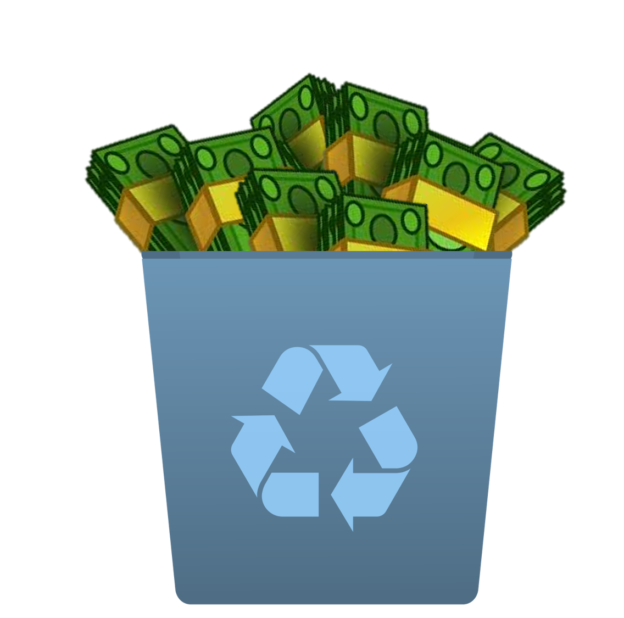
Capitol Hill
I recently had the pleasure of going back east to DC involving meetings on Capitol Hill where the discussion of biodegradable materials in the recycling stream was the main focus. After the representative from a recycling organization gave his presentation, I then gave mine. We were perceived to be in opposite corners, so we were asked to speak in the same meetings so as to address any clarifying questions that might have come up after our presentations. It dawned on me that this perception brought on by the recycling organizations (APR and NAPCOR) are in actuality NOT TRUE!
Truth
ENSO and the recycling community are very much in alignment with the goal of saving our natural resources as long as possible. When ENSO embarked on the overwhelming mission to eliminate plastic pollution from our planet, we had recyclers and their processes as the #1 consideration-everything we came up with had to pass the scrutiny of the question, “does this material have any adverse effect on the recycling stream.” Many years and engineering feats later, we did it!!! We have had dozens of recyclers (or reprocessors) test and actually run the ENSO material through their process to see if there are any issues with the ENSO plastic. With no exception, 100% of them have indicated that they would never know it was an ENSO bottle if we have not told them. Scientifically, that has to be true because our mix does not even chemically bond with the plastic it is being mixed with.
Recycling & Pollution
ENSO and the recycling community are very much in alignment, so much that we feel we are at stake with their success -the recyclers are in a tough market currently, as it seems they are being diminished on every turn. They are not allowed to participate in decisions regarding innovations to help the environment, but rather are left to deal with the new materials as they show up in their processing. Some of the reprocessors are worried about staying in business because of the issues arising from trying to sort out extremely incompatible materials like PLA (corn based plastic) from their PET bottle stream. They have indicated to us that they literally cheered because an environmental plastic was made that did not affect their bottom line by contaminating their recyclate material. Daily, companies using plastic are getting increased pressure to “stop polluting the environment”. For instance, almost daily I see news about plastic bags being banned around the world. And although the blame should not rest solely on manufacturing, something HAS to be done. We need to demand a new attitude towards the use of plastic. ENSO is a real and tangible solution to not only keep recycling intact, but also do much, much more. Globally, the human race is only recycling 5% of all plastics…think about that for a minute. Since when did you ever accept a 5% success rate as a viable solution under any circumstance? Could you imagine an oil spill clean-up effort saying, “Welp, we’ve cleaned up 5% of the spill, the rest well act as if there is no issue.” Yet it is happening right before our eyes when it comes to addressing the end of life issue of plastics. Why not make plastics biodegradable so when they are thrown into a landfill, they can contribute to the growing practice of creating clean energy from landfill natural gas? Renewable, green, clean, smart…intelligent -all describe this value proposition! Companies using it, and handling it will also add the description, “profitable” –but that’s their little secret.
ENSO
Our message is clear, “recycle ENSO plastic wherever, and whenever you can. But if you fail, (and there is a 95% chance of that happening), know that you are still in harmony with our planet because this plastic will biodegrade naturally utilizing the earths microorganisms (microbes).” The environmental issues surrounding plastic use are rising, not decreasing. People that recycle, will always recycle-they will not change their values to all of a sudden become “litter bugs”, because something is recyclable and biodegradable. A national poll done on our behalf supports this, and also says that 61% of America believes it is more important to have plastic biodegradable than recyclable. Also, recycling will not rid the planet of plastic pollution, just delay the fact that inevitably everything plastic will end up in a landfill. ENSO says that we can have both, and if you are a consumer, you should demand both, and if you are a manufacture, you would do well offering both. What more can manufactures do? (They have already reduced our plastics down to where the next step for a bottle is a zip lock bag!) The answer? Companies and brands can get smart and innovative. Doing this now creates opportunity for growth in market share because they are seen as smart and innovative, and consumers like both to have that coveted loyalty. We can have recycling and ENSO’s solution to long term plastic pollution a complimentary package to bridge the battle between pro-environment vs. plastic use. My mom called that, “having your cake, and eating it too.” We each might be required to pay a penny or two extra per bottle for this added environmental value, but with the way things are going right now with all of the plastic building up on our lands and seas -“do the math” is another momism that is very appropriate. – Del Andrus


